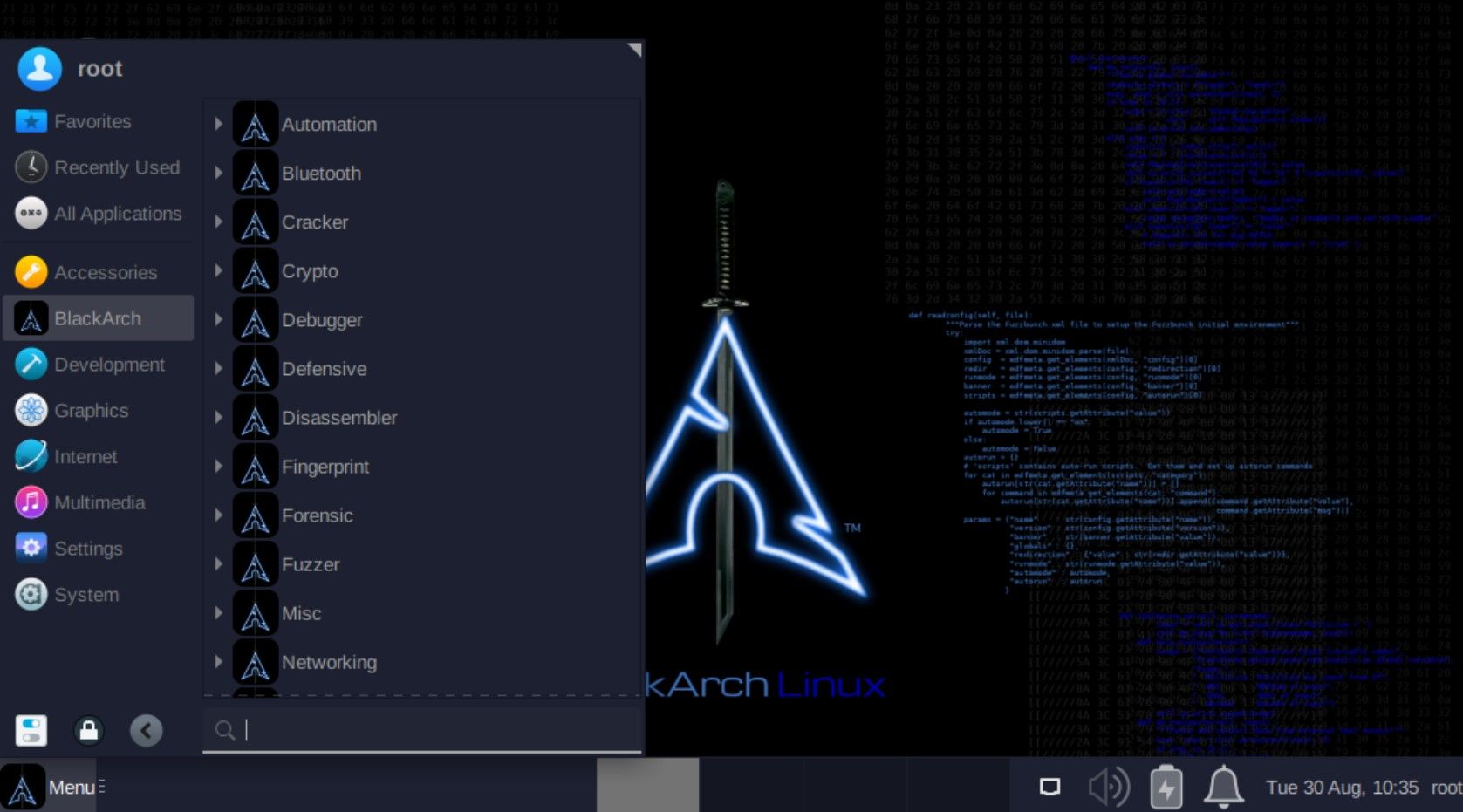The fact that Arch Linux has spawned a variety of related Arch-based distros exemplifies its true worth within the Linux ecosystem.
BlackArch is another variant that derives its roots from the ubiquitous Arch family. Its name doesn’t do it full justice, as it hardly gives an inkling of its identity and usage procedures.
By the end, you'll have a deep understanding of BlackArch and its features, and will be able to decide for yourself if you should switch from the original Arch Linux to the darker, more effective distribution.
What’s BlackArch Linux, and Why Should You Use It?
In 2001, Canadian programmer Judd Vinet developed the original vanilla Arch Linux, which was later released to the broader public in 2002. Since he wasn’t too satisfied with how the distribution handled packages, he created Pacman, which later became the go-to tool for package installation on this OS.
Pacman offers a series of user-friendly commands, which every Arch user needs to know, before delving deeper into any of the related OSes.
BlackArch is an open-source penetration testing Linux distribution, commonly used by people interested in pentesting and cybersecurity.
Like Kali Linux, it comes equipped with various cybersecurity tools (2,810 applications), essential to perform a complete system analysis to weed out hardware and software vulnerabilities.
What You Need to Know About BlackArch
Like some of its penetration testing counterparts, even BlackArch has a set of unique features which set it apart. There is a reason why it is considered to be one of the best Arch-based Linux distros, after Manjaro and EndeavourOS.
Here’s what you need to know about this distribution:
1. Multiple Desktop Flavors
Linux always comes with its own desktops, adding to its dynamic nature and available usage facilities. This dark, Arch-based distro slays it with its desktop versions, which include dwm, spectrwm, Openbox, wmii, awesome, and Fluxbox.
2. Default Applications
The distro offers an excellent opportunity for you to install the available applications individually and in groups. Each application is neatly categorized so users can make the most of the available options.
There are groups for the following:
- Wireless
- Disassemblers
- Malware
- Anti-forensic
- Crackers
- Fuzzers
- Sniffers
- Proxy
- Backdoors
- Keyloggers
- Debuggers
- Decompilers
Plenty of different groups are also available; however, this list will give you an idea of what you can expect once you boot in.
3. Target Audience
When it comes to the target audience and the intended user base, novices should steer clear of BlackArch. As a penetration testing OS, BlackArch caters to professionals who know the applications thoroughly and can use/install packages as needed.
4. Multiple Architecture Options
Initially, the OS offered only i686 and x86_64 architecture options; however, from 2014 onwards, there were new additions to the list, which included ARMv6h and ARMv7h architectures.
5. ISO versions
There are three different ISO options you can choose from based on your requirements and proficiency with Linux. These are as follows:
- BlackArch Linux 64-bit Full ISO: Given its hefty size, the build repository contains all the essential tools, which come pre-installed. There are multiple desktop options available in this installation. The user can toggle between the different versions post installation.
- BlackArch Linux 64-bit Slim ISO: As the name suggests, this option comes equipped with a few essential tools and utilities, which users might need once they boot into their desktop. The Slim version ships with an XFCE desktop, by default.
- BlackArch Linux 64-bit Netinstall ISO: The third and final option is a bare skeleton, which you can use with bootstrapping machines. It’s lightweight and comes with minimal packages, making the installation easier and seamless.
You can explore and download all three options from the official BlackArch website.
Download: BlackArch Linux
6. Absence of a GUI
A graphical user interface continues to be one of the winning points for any operating system installation. However, the absence of a GUI in BlackArch Linux might make it a dealbreaker for a few users, who are already familiar with using Kali and other related distros.
You must perform all application-related updates and installations from the terminal within this Arch-based distribution since it's a CLI-based OS. For a first-time installation, you can use Calamares, which is a guided installation method for BlackArch.
BlackArch: A Lightweight Arch-Based Linux Distro
Arch-based distros might seem user-friendly to some users, but this can't be further from the truth. There are a few things you need to work with, before touching upon any of the related distros.
BlackArch is no different; it's essential to consider all the required elements, before beginning to install it on your system. If you are a new user, it's best to experiment with Arch Linux first, and then move your way slowly onto the related distributions.


